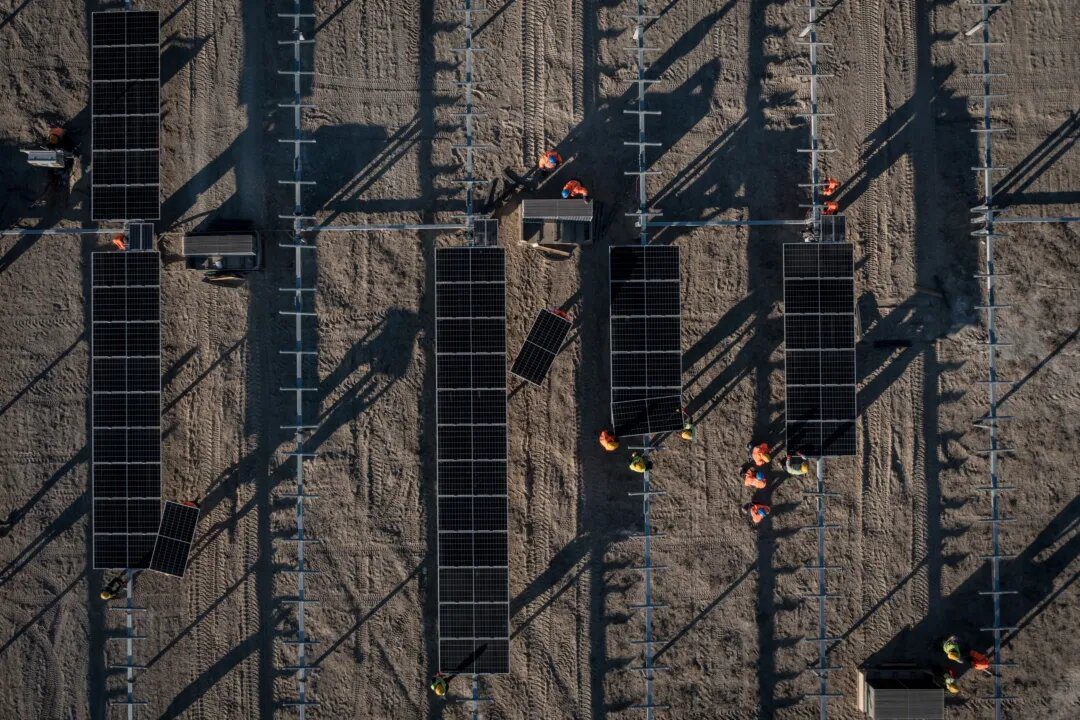(Bloomberg) —
Over the past five decades, the US has installed about 140 gigawatts of solar power generation capacity, enough to provide more than 3% of its power. That is just a start: Between now and the end of the decade, the country might add three times that much.
It might seem fanciful to expect a market to quadruple in size in only eight years. But for that we can thank President Joe Biden’s Inflation Reduction Act and its generous, decade-long subsidies for both clean energy manufacturing and generation in the US. Adding 360 gigawatts of solar in eight years does not require an exceptional year-on-year growth rate, though it does require investment. And it will certainly need a speeding up of the often-fraught process of interconnection that brings new projects onto the grid.
The IRA’s generosity is the topic of the second half (or perhaps the first!) of every conversation at gatherings of energy professionals today. Much of that talk is praise, but some of it is uncertainty. That is, will the IRA live up to its potential? And what are companies actually doing to harness the potential?
We can look at public company earnings presentations for answers. And there is one company that offers a particular lens on US renewables markets: the thin-film solar manufacturer First Solar Inc., headquartered in Arizona.
First Solar has substantial manufacturing capacity in the US; its solar technology is exempt from the tariffs that vex many international companies and impede climate progress . The company’s products are therefore in high demand.
Very high demand. First Solar’s order book, the total of its expected future sales, grew slowly if steadily over the second half of the last decade. By the start of 2020, it had reached 11.5 gigawatts — a significant if not massive number in the global context.
Since then, though, it has grown almost seven-fold, including a doubling from the second quarter of 2022 to the end of the first quarter of 2023. (Biden signed the IRA into law in August 2022.) The company’s order book at the end of the last financial quarter was nearly 70 gigawatts’ worth of modules.
Importantly, almost all of that order book is in North America. In its latest earnings call, First Solar identified more than 70 gigawatts of what it calls “mid-to-late stage” booking opportunities, more than 90% of which are in North America. (The North American market is basically the US right now, with respect to Canada and Mexico, which could add a combined 35 gigawatts of solar in the next several years.)
The IRA is a step change for the US energy sector, one that even the most informed actors are still sorting out months after its passage. That is a multi-party process: Analysts project, industry groups opine and companies do both of those things. But companies also plan investment, and even more immediately, book new business. It is those bookings that are probably the most instructive, this early into the IRA’s tenure.
First Solar is a specific case, but that specificity also gives us clarity on what its customers — who are capable of making sales commitments years in advance of their installations — think of the market to come. What they think is quite clear: A boom is coming.
Nat Bullard is a senior contributor to BloombergNEF and writes the Sparklines column for Bloomberg Green. He advises early-stage climate technology companies and climate investors.
To contact the author of this story:
Nathaniel Bullard in Washington at nbullard@bloomberg.net
© 2023 Bloomberg L.P.





